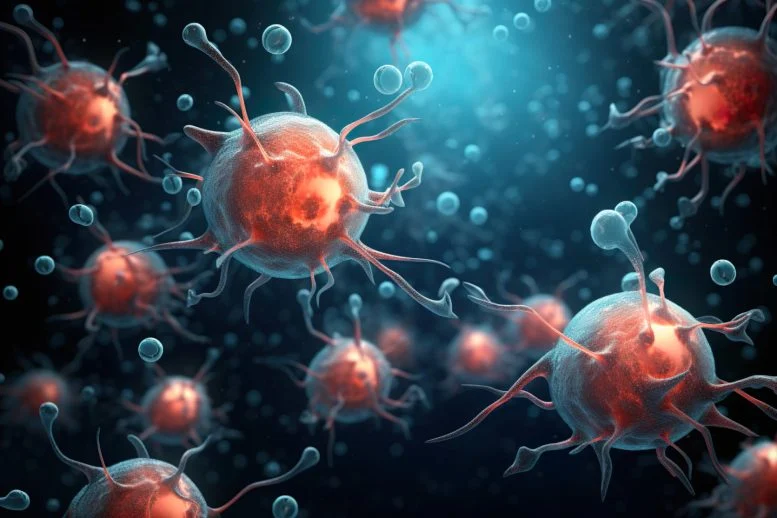Nearly 8 in 10 women develop fibroids, noncancerous tumors that manifest in uterus during child-bearing years, causing excruciating pain, extensive bleeding, and infertility.

A groundbreaking study conducted by researchers at the University of Cincinnati has unveiled critical insights into the growth of uterine tumors, potentially offering hope to the millions of women grappling with painful fibroids.
Nearly 8 in 10 women develop fibroids, noncancerous tumors that manifest in the uterus during child-bearing years, causing excruciating pain, extensive bleeding, and, in some cases, infertility.
Published in the journal F&S Science, the research sheds light on different signaling pathways employed by fibroid cells compared to uterine cells. Stacey Schutte, an assistant professor of biomedical engineering at UC’s College of Engineering and Applied Science, emphasized the importance of identifying therapeutic targets to treat tumors without affecting surrounding tissue.
The conventional methods of treating fibroids often involve invasive and costly procedures, amounting to billions of dollars in expenses for patients and insurers annually, according to the National Institutes of Health. These treatments can also lead to infertility, making it a significant concern for affected individuals.
Schutte, drawing on her experience as a postdoctoral fellow at Emory University School of Medicine’s Department of Gynecology and Obstetrics, highlighted the prevalence of uterine fibroids, with one in nine women undergoing a hysterectomy in their lifetime, and one-third to one-half of those cases attributed to uterine fibroids.
While fibroids are typically non-life-threatening, the pain they cause can be overwhelming. Contraction-induced pressure on the tumors pushes them into the muscle tissue, contributing to the immense discomfort experienced by women.
The growth of fibroids is influenced by estrogen and progesterone released during each menstrual cycle, causing the tissue lining inside the uterus to thicken. However, cells can also react to physical strain, prompting researchers to explore mechanical strain as a potential factor in fibroid growth.
UC researchers cultivated fibroid cells and uterine cells on plates with an elastic bottom, simulating the mechanical strain fibroids encounter in the uterus. Using a flexible tension device, the cells were exposed to strain, leading to the discovery that fibroid cells were more sensitive to mechanical strain than uterine cells.
Rachel Warwar, MD, lead author of the study in UC’s College of Medicine, highlighted differences in how the cells held their shape, emphasizing the importance of incorporating mechanical strain into the study of fibroid cells along with hormonal factors. The findings underscore the need to understand the pathology of fibroid cells, considering both hormones and mechanical strain, to develop more effective treatments.
Fibroids are highly prevalent, affecting nearly 4 in 5 women during their lifetimes, representing a substantial healthcare cost of up to $9 billion annually in the United States. Common noninvasive treatments often target hormones responsible for fibroid growth. The researchers are now exploring nonhormonal treatments for fibroids, offering an alternative option to preserve the fertility of women who wish to become pregnant.
Andreja Moset Zupan, a research associate in Schutte’s biomedical engineering lab and study coauthor, highlighted the significance of finding nonhormonal treatments. By understanding the cell pathology, researchers can use 3D simulations and modeling to gain deeper insights into fibroid development and identify optimal treatment strategies.
Schutte expressed the desire to find ways to affect fibroids without impacting surrounding muscle cells, emphasizing the importance of targeting specific pathways that respond differently. The next step involves creating more complex tissue models to mimic uterine tumor growth, allowing researchers to inhibit it effectively.
The promising outcomes of this study bring renewed hope for women grappling with the challenges of uterine fibroids tumor, offering the potential for more targeted and noninvasive treatments in the future. As research progresses, it holds the promise of transforming the landscape of fibroid management and improving the quality of life for millions of affected individuals.